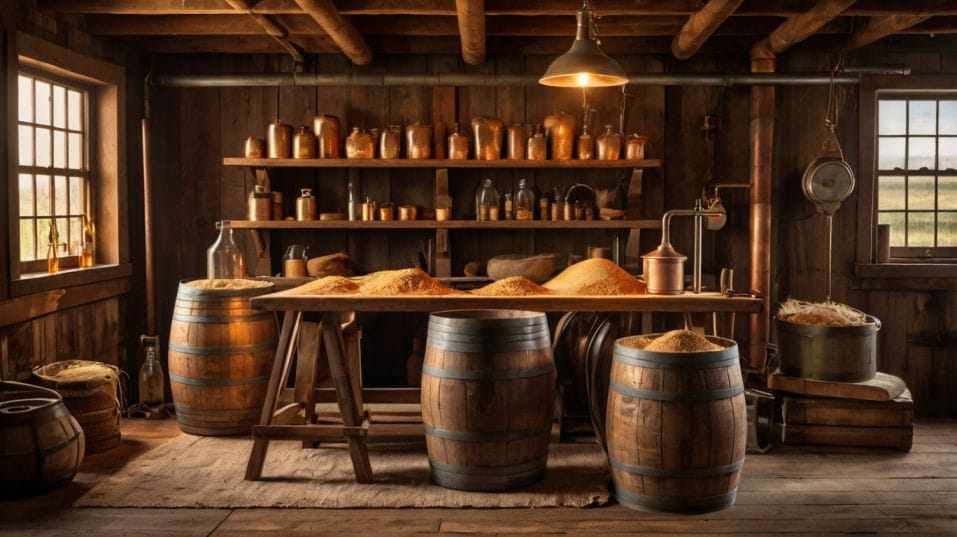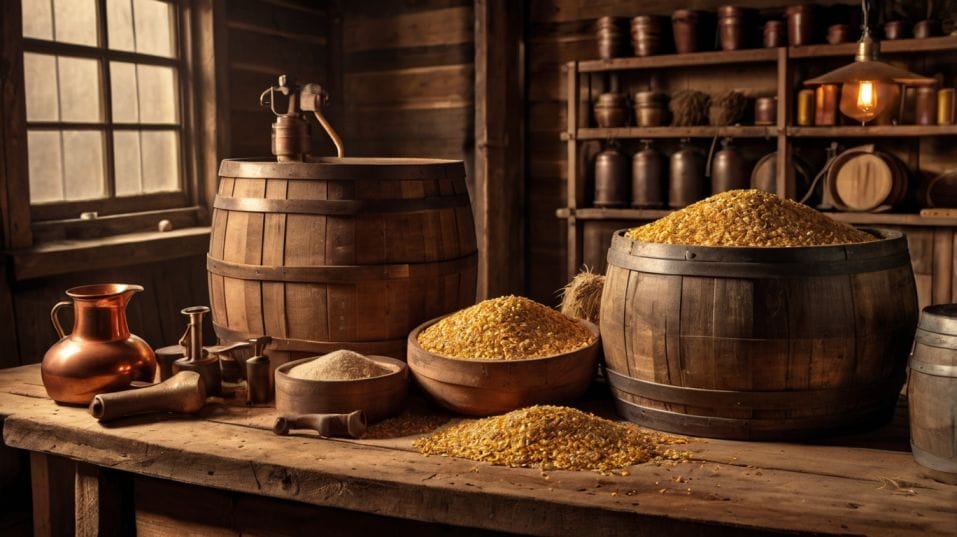Bourbon vs Rye: What's the Real Difference?
Bourbon vs rye? Learn the real difference so you can taste, collect, and mix whiskey with clarity—no hype, just sharp, usable insight.

What’s really in your glass—sweet comfort or sharp fire? If you’re getting serious about whiskey, understanding the divide between bourbon and rye is essential.
This isn’t just a matter of taste. It’s the key to reading bottles, building a smarter collection, and making drinks that actually work.
Once you grasp how one grain choice—corn or rye—reshapes the entire experience, you won’t drink the same way again.
Mash Bill: The DNA of the Spirit
Every whiskey starts with a mash bill—the grain recipe that defines everything that comes after. Bourbon, by U.S. law, must be at least 51% corn.
Most use far more—often 70% or more. That heavy corn load delivers sweetness, viscosity, and an approachable softness right out of the gate.
Rye whiskey, by contrast, requires at least 51% rye grain. That number might seem close, but rye behaves completely differently in fermentation and distillation.
It’s drier, sharper, leaner. The flavor doesn’t roll out slowly—it attacks. You’ll notice it immediately. This one choice—corn vs. rye—is the fork in the road.
It’s why bourbon often shows flavors like vanilla, caramel, and baked fruit, while rye leans toward cracked pepper, spearmint, cinnamon, and even eucalyptus. You’re not imagining those differences. You’re tasting the grains themselves.
The grain bill is your roadmap. Learn to read it, and you’ll start predicting a bottle’s character before you even taste it.

The Distillation Cut: How It Shapes Flavor
Here's where it gets deeper. Bourbon and rye aren’t just made with different grains—they’re treated differently in the still.
Rye, with its spicier, more volatile grain profile, is harder to distill cleanly. It foams, it sticks, it bites back.
That makes distillers work harder to get a precise cut—the moment where they separate the flavorful heart of the distillate from the harsh heads and bitter tails.
Bourbon, thanks to corn’s forgiving nature, is often distilled at a slightly higher proof. It can be softer, broader, less volatile. Rye demands tighter control.
And when it's done right? It crackles with energy. The best rye tastes alive—sharp, articulate, and emotionally specific.
If bourbon is a slow, rich conversation, rye is a fast, passionate argument. Both have value. You just have to decide which mood you’re in.
Barrel Aging: What the Wood Brings
Both bourbon and rye must be aged in new, charred American oak barrels. But they age differently.
Bourbon's sweetness pulls out caramel, butterscotch, and toasted oak. It softens in the barrel, rounds out, becomes more luxurious with time. A well-aged bourbon (say, 8 to 12 years) often leans into dessert-like richness.
Rye, on the other hand, wrestles with the wood. Young rye can taste raw, even aggressive—like biting into a green peppercorn. But give it time, and it starts pulling deeper spice, herbal complexity, and structure from the barrel.
At 6 to 10 years, a rye can reach an elegance bourbon rarely touches—dry, floral, quietly powerful.
Barrel influence isn’t just about age—it’s about balance. A good collector or drinker doesn’t just look at a number. You learn to sense whether the grain or the oak is leading the conversation.
Flavor Structure: Building a Palate That Thinks
Forget tasting notes for a second. Start thinking in terms of structure. Bourbon usually starts sweet—your brain registers the corn sugar and barrel vanillins right away.
Then come the secondary waves: oak, spice, nuttiness, dried fruit. It builds like a crescendo. Rye flips that progression.
It opens fast with dry spice, herbal tension, and sharper notes like clove or pine. The sweetness, if it comes at all, shows up at the end—faint, fleeting, often more honey than caramel.
This structural awareness sharpens your tasting skills. Instead of asking “what do I taste?”, ask “where does it start, where does it go, where does it end?” Bourbon flows. Rye spikes. Learn that pattern, and your tasting game levels up—instantly.
Cocktails: Picking the Right Spirit for the Job
If you’re making classic whiskey cocktails, the choice between bourbon and rye isn’t arbitrary—it’s strategy.
Bourbon in Cocktails
Bourbon gives cocktails weight and warmth. Its sweetness smooths out sharper elements like bitters, vermouth, and citrus. That’s why it’s the go-to in many modern Old Fashioneds—it’s forgiving, easy-drinking, crowd-pleasing.
Rye in Cocktails
Rye, though? It punches through. In a proper Manhattan or Sazerac, rye's spice cuts through sugar and bitters with precision. It holds its shape. It adds edge, not just depth.
So if you’re mixing a drink that needs clarity, structure, and backbone—use rye. If you want comfort and balance—go bourbon. Knowing the difference helps you build cocktails that actually work, not just imitate old recipes.
Collecting: Don’t Just Chase Labels—Chase Profiles
If you're starting a whiskey collection, don’t build it around hype. Build it around contrast and context.
Have a strong bourbon? Pair it with a bold rye and taste them side by side. Notice how your palate reacts.
Keep a bottle of high-corn, low-rye bourbon next to a spicier high-rye bourbon. Then throw a 95% rye whiskey into the mix and experience the extremes.
By building a collection based on grain variation, you teach your palate to detect nuance. It also saves you from wasting money chasing rare bottles you won’t actually enjoy.
A good collection doesn’t just flex—it's functional. It tells a story about your preferences, your learning curve, your taste. Bourbon and rye are your starting points. They map the edges of the whiskey landscape.
Final Thoughts
The difference between bourbon and rye isn’t subtle. It’s a sensory shift. One leans sweet and smooth, the other sharp and spicy.
But more importantly—it’s a mindset shift. When you understand the grain, the distillation, the barrel aging, and the flavor structure, you start tasting with purpose.
Don’t just drink passively. Taste with attention. Build your palate like a toolset. Try one bourbon and one rye tonight—neat, no distractions.
Notice the structure, not just the flavor. Think about how it lands, how it moves, how it finishes. That’s where real whiskey knowledge starts.
You’re not here to collect trophies. You’re here to collect understanding. And it starts with the pour in your hand.




